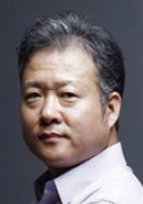Dongsheng Xu1*, Jinhu Zhang1 , Xuexiong Li1, Zhichao Meng1, Hongtao Ju1, Hui Guo1, Yi Wang2
Libin Liu3, Dong Wang4, Jinshan Li2, Yuyou Cui1, Rui Yang1
1Shi-Changxu Innovation Center for Advanced Materials, Institute of Metal Research, Chinese Academy of Sciences, Shenyang 110016, China
2State Key Lab of Solidification Technology, Northwestern Polytechnical University, Xi'an 710072, China;
3School of Materials Science and Engineering, Central South University, Changsha 410083, China;
4Frontier Institute of Science and Technology, Xi'an Jiaotong University, Xi'an 710049, China.
EXTENDED ABSTRACT: Titanium alloys have been widely applied in aerospace, marine and medical fields, due to their high strength, low density, corrosion/high temperature resistance, and good biocompatibility, but since these applications have strict performance requirements, and the fabrication route is long, the development of a new alloy and its optimization is difficult and time consuming, therefore cannot meet the needs of advanced technology. In this talk the achievements from the Materials Genome Engineering project "Integrated Computational Design and Fabrication of Advanced Titanium-based Alloys for Aviation" will be presented. On the basis of the establishment of computational design and optimization platform for titanium alloy, the precision casting and mechanical properties optimization of low-pressure turbine blades of titanium aluminum in aero-engine were studied, with emphasis on the mechanisms of formation of boride and grain refinement. Microstructure optimization by phase field simulation for long-term stability of microstructure, and the influence of various defects on the evolution of microstructures studied. MD simulation reveal the atomic details of dislocation interaction and the formation and accumulation of point defects during fatigue. The mechanism of the prior particle boundary (PPB) formation during the HIPping of Ti2A1Nb alloy power, and the optimization of the rolling process of combustion chamber casing is realized with the help of finite element simulation. Based on the first principles alloying effects calculation and microstructure evolution simulation under different conditions, the composition and microstructure of Ti-7333 high strength and high toughness alloy are optimized. Based on the multi-scale simulation, the deformation uniformity in the forming process of anti-torsion arm for aircraft landing gear is achieved. Finally, through the comprehensive performance evaluation process of the project, the concept of material genome engineering is further explored. It is recognized that, in addition to the high-throughput computing, experiments and data technology, special emphasis should be placed on the interdisciplinary collaborations, as well as the early contact and close cooperation among material research and development, manufacturing and application personnel.
Keywords:Titanium alloy; Multidisciplinary collaboration; Microstructure; PPB; Process optimization

Xu Dongsheng is a professor at the Institute of Metal Research, Chinese Academy of Sciences. He is also a professor of University of Science and Technology of China, and Vice Chairman of Computational Materials Branch of Chinese Materials Research Society. He was an adjunct professor at OSU and Visiting Scientist at MIT. He has long been engaged in multi-scale computational design and process optimization of titanium alloys. He is the Chief Scientist of the National Key Research and Development Program project "Integrated Computational Design and Fabrication of Advanced Titanium-based Alloys for Aviation", the task leader of 3 National Basic Research (973) and many other projects. He has published 100+ papers, obtained 10+ patents, and trained 40+ graduate students. He has organized international conferences for many times and made 40+ invited talks on international conferences. He serves on the editorial board of the international journals Modeling and Simulation in Materials Science and Engineering (MSMSE), and MGE (Materials Genome Engineering).